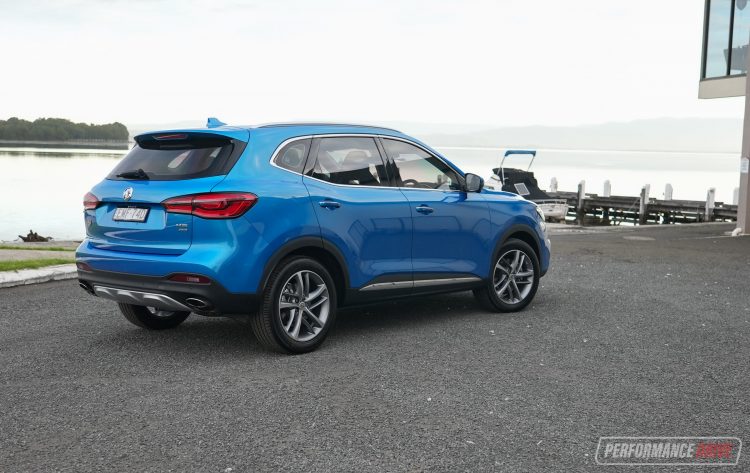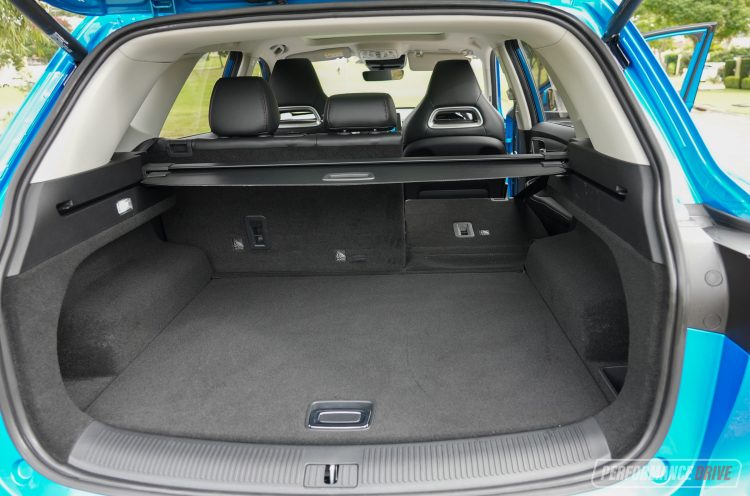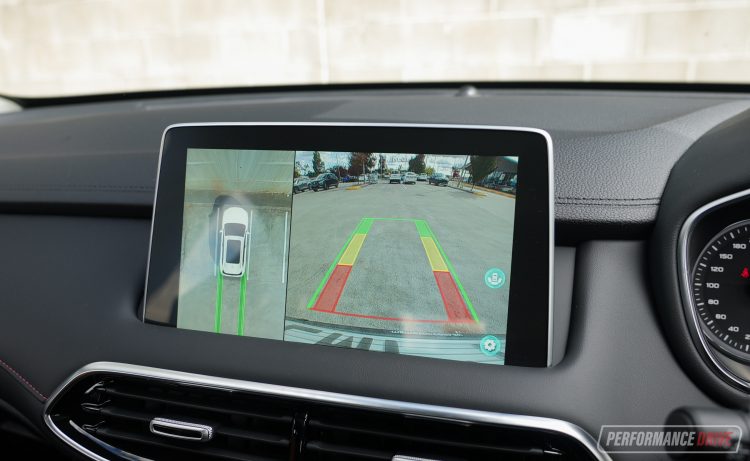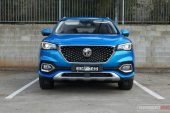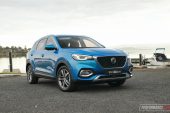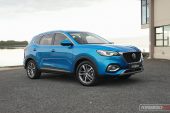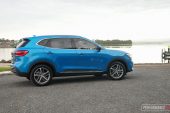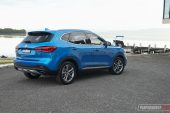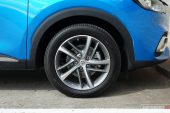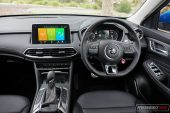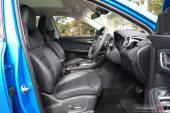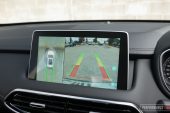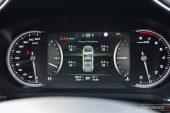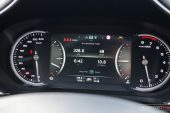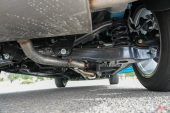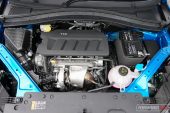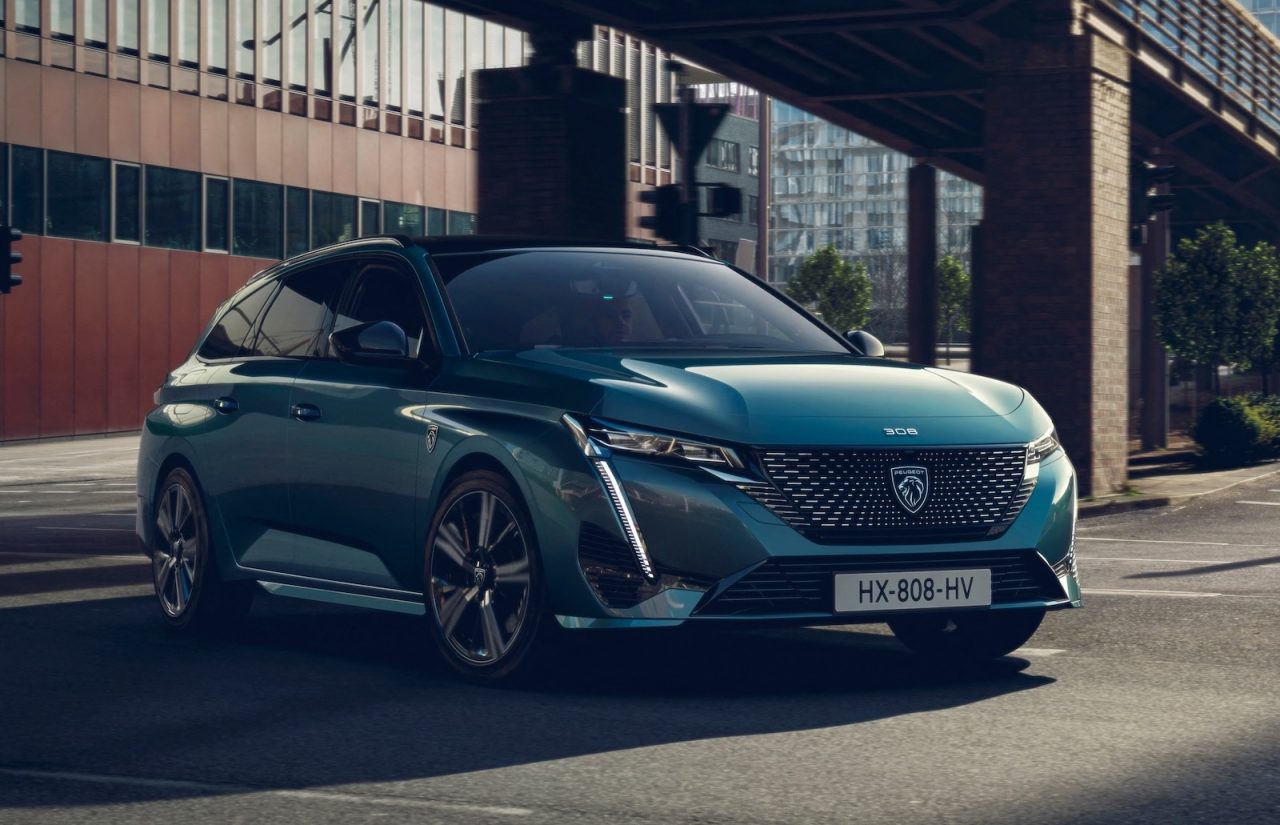MG Motors now offers a wide range of practical SUVs, and competes in two of the most popular SUV classes in Australia; small and medium. This is one of the latest additions to arrive, the 2021 MG HS Essence X. It’s the AWD option for the mid-size HS range.
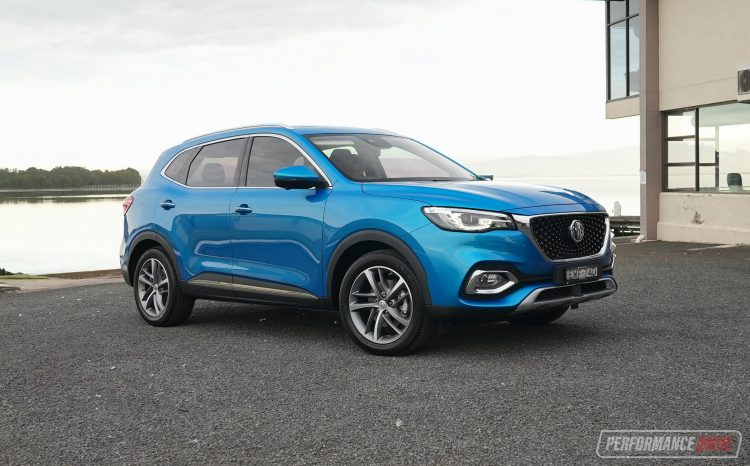
You can get it in entry Excite X or Essence X trim levels, priced from $37,990 and $42,990, respectively (both drive-away prices). These become MG’s flagship models, joining the 2WD HS Core and 2WD Vibe. In fact, the only MG offering that’s priced higher is the HS PHEV (plug-in hybrid).
These prices are getting up there for what has been known as a budget brand so far in Australia. Compared with the most popular SUV in this class, the Toyota RAV4, the HS is about $3000-4000 more affordable once you factor in on-road costs.
For example, the top RAV4 Cruiser with the 2.0-petrol option is priced from $40,915 (about $45,141 drive-away), but it comes in 2WD only. The Cruiser AWD (only available as hybrid) is priced from $46,415 (about $50,874 drive-away). However, that should really be compared with the MG HS PHEV which is priced from $46,990 drive-away. MG also offers a seven-year warranty.
2021 MG HS Essence X AWD – THE SPECS
[column width=”47%” padding=”6%”]Engine: 2.0-litre turbo-petrol four-cylinder
Output: 168kW@5300rpm / 360Nm@4000rpm
Transmission: Six-speed dual-clutch auto
Drive type: All-wheel drive
Wheels: F & R: 18×7.5, 235/50
ANCAP: Five stars
Tare weight: 1670kg
Power-to-weight: 9.94:1 (kg:kW)
Official fuel economy: 9.5L/100km
Economy during test: 10.8L/100km[/column] [column width=”47%” padding=”0″]Fuel capacity/Type: 55L/95 RON
Power efficiency: 17.68kW:L/100km
0-60km/h: 4.31 seconds*
0-100km/h: 8.80 seconds*
60-110km/h: 5.85 seconds*
1/4 mile: 16.46 seconds at 143.7km/h*
Max acceleration: 0.601g
100-0km/h braking: 3.02 seconds at 39.25 metres*
Max deceleration: -1.193g
Decibel at idle: 44*
Peak decibel at 60-100km/h: 86*
Priced from: $42,990 (drive-away)[/column][end_columns]
* Figures as tested by PerformanceDrive on the day. Factory claims may be different
2021 MG HS Essence X AWD – THE PACKAGE
MG has done a good job on the exterior design we think. The panels are nicely curved and some of the trimmings gleam in chrome or a brushed metal-like surface. Both the Excite and Essence feature the same 18-inch alloy wheel designs, wrapped in 235/50 Michelin Primacy tyres. As with other models in MG’s range, the only aspect we’re not sure about, in terms of styling, is the way the wheels sit in from the body instead of sitting flush like on most competitors.
Inside, the HS displays a good mix of practical-minded design and storage, with a layer of luxury over the top. The driving position could be improved with more reach steering column adjustment, as it can take some time finding a natural position, but the three-spoke steering wheel feels nice to grasp and the buttons on it are thoughtfully positioned. You do sit quite high up on the seat as well and you can’t lower it down enough in our opinion.
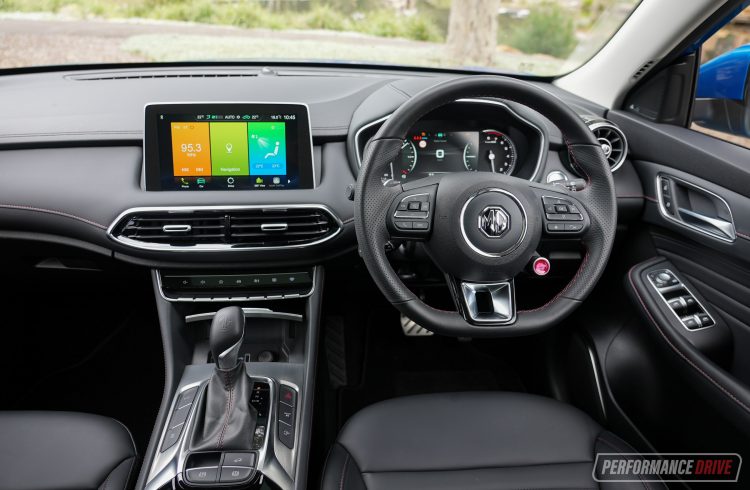
Visibility is great through the front and over your blind-spot, and it’s easy to park, although the side mirror on the driver’s side can block your diagonal view. Again, if the car had more reach adjustment for the steering column you might be able to better position yourself. The seats are very comfortable and they look sporty and premium, too.
A quality leatherette trim is carried over to the door trim, complete with red stitching. It’s good to see a soft coating on the dash, not only helping to provide a premium feel but also to support good cabin acoustics and sound-deadening. Brushed-style aluminium trimmings finish it all off.

Up on the dash in all HS models is a 10.1-inch touch-screen media interface running Android Auto and Apple CarPlay, with the Excite and above adding satellite navigation. Digital radio is not available at all, which is a bit disappointing especially for this top variant, and the standard range-wide six-speaker sound system is below par for this class. Dual-zone climate control is standard on the Excite and Essence.
Overall cabin space and room for passengers is very good. You get lots of freedom to move about, with no awkward shapes or protrusions from the dash or door trims, and legroom in the back is a particular standout.
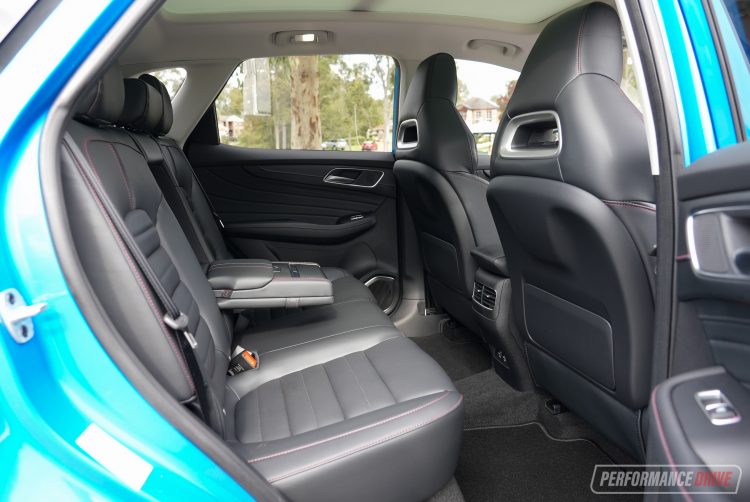
The Essence does come with a full-length sunroof and blind, and when opened it really brightens up the atmosphere and makes it feel even more spacious and open. Rear passengers are treated to their own climate vents, charging ports, and cup and bottle holders, so that’s fantastic to see.
Boot space topples some of the class rivals, presenting 463 litres and opening to 1287L with the rear seats folded down. There is a plastic-lined under-floor storage area for loose or wet items as well. It would be good to see a 12-volt socket in the back just to really top it off.
2021 MG HS Essence X AWD – THE DRIVE
This 2.0-litre turbo-petrol four-cylinder engine produces 168kW at a lowish 5300rpm, and 360Nm at right on 4000rpm. These are some decent peak figures, especially the power, but their availability is through a very narrow window. In our opinion, this is a sign of its age. It’s actually based on an old GM 1.6 turbo, built for Opel vehicles. However, in 2.0-litre turbo form it is built by SAIC via a partnership with GM, and first saw the light of day back in 2014 in the LDV G10 van (also called the Maxus G10 overseas).
Fuel economy on the official combined cycle is stamped at 9.5L/100km. That’s not good at all for this class, and again, a sign of its age. For example, the Ford Escape ST-Line and its 2.0-litre turbo, with 183kW, is stamped at 8.6L/100km. The top-spec Hyundai Tucson AWD with its 132kW 1.6 turbo-petrol is rated at 7.2L/100km. In other words, if fuel economy is a high priority to you, there are plenty of other options in this segment that can do far better. Including the MG HS PHEV which is rated at just 1.7L/100km.

Rubbing more salt into the wound is the average emissions rating of 221g/km. This is alarmingly poor. Most dual-cab turbo-diesel 4×4 utes can better this figure (Isuzu D-Max 3.0TD is rated at 207g/km, Nissan Navara 2.3TTD is rated 208g/km). And they are obviously very heavy, diesel, and run with poor aerodynamics and inefficient tyres. They do, however, run in rear-wheel drive by default, but a similar thing could be said of the all-wheel drive system applied here; it’s a 4×4 on-demand system, which means most of the time it is running as a front-wheel drive.
A more relevant perspective is the Mazda CX-5, with its 170kW 2.5-litre turbo-petrol, which is rated at 191g/km. And for some indication of where the current technology benchmarks are in this day and age, the BMW X3 M40i with its 285kW 3.0-litre turbo six-cylinder, in the same vehicle class (mid-size SUV, albeit premium) is rated at 199g/km (and 8.7L/100km). The 294kW Jaguar F-PACE P400 is also rated at 202g/km (also 8.7L/100km). Now, we’re not expecting this plucky MG to offer superior stats against premium European vehicles of the same size and format, but we do expect a lot better than 221g in 2021. We’re also mentioning these other models to provide a factual benchmark rather than leaning purely on an opinion.
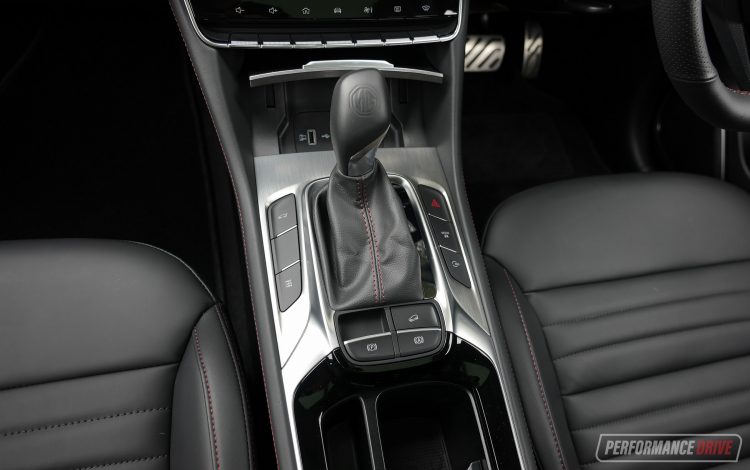
Making things worse for this powertrain is the fact there is often a big delay from the moment you depress the accelerator and the car actually moving off the line. Obviously this isn’t ideal in busy, inner-city conditions where you need to be able to call for power promptly. In fact, there were times during our test when we struggled to pull out from a busy stop-sign intersection, and the car delayed, almost dangerously with its nose rolling out before the transmission fully engaged. A big part of the blame here can be directed at the inherent workings of a dual-clutch transmission, which brings about the question; is a DCT really necessary for this style of vehicle?
The throttle mapping also seems inconsistent. For example, we did a few tests on a private road, applying about 50 per cent throttle at 40km/h. Almost every time the engine responded differently. Sometimes it provided a punchy reaction and kicked down a gear, at times too aggressively. Other times it responded like you’ve only pushed 10 per cent throttle. And that’s without changing drive modes or starting off in a different gear. It’s strange.
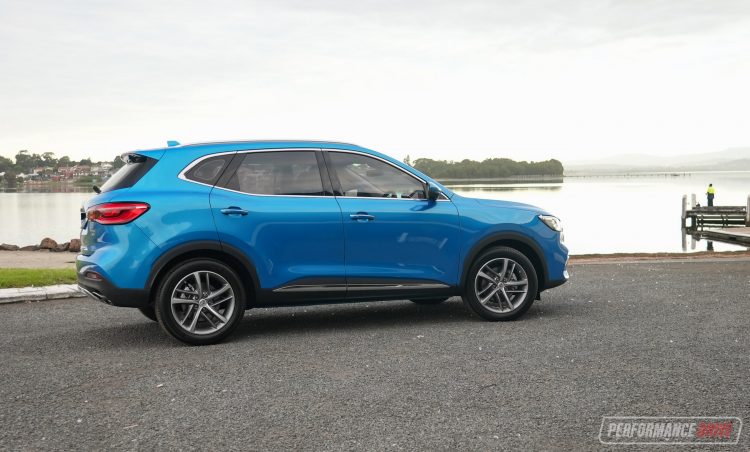
So while this powertrain can look great on paper, it really needs further calibration and development to get close to today’s market standards. And we guess that’s what you’re paying for when you opt for the competition. MG doesn’t have decades, or years in fact, of development data under its belt like some of the rivals. But over time we’re sure such aspects will improve and it will eventually catch the established manufacturers.
Performance across the 0-100km/h sprint is about average, with our Racelogic Vbox showing a best result of 8.80 seconds. Braking performance is good, no doubt thanks to the Michelin tyres. It can stop from 100km/h in 39.25 metres, which is, compared to our previous tests of other SUVs in this class, about average. We did notice the HS has a tendency to skid on the ABS more so than others and stop slightly out of alignment. We ran the test three times and experienced a similar result (same dry piece of tarmac we always use). This is not what we’ve seen in other other SUVs of this class. We think the brake force distribution calibration could do with some fine-tuning.
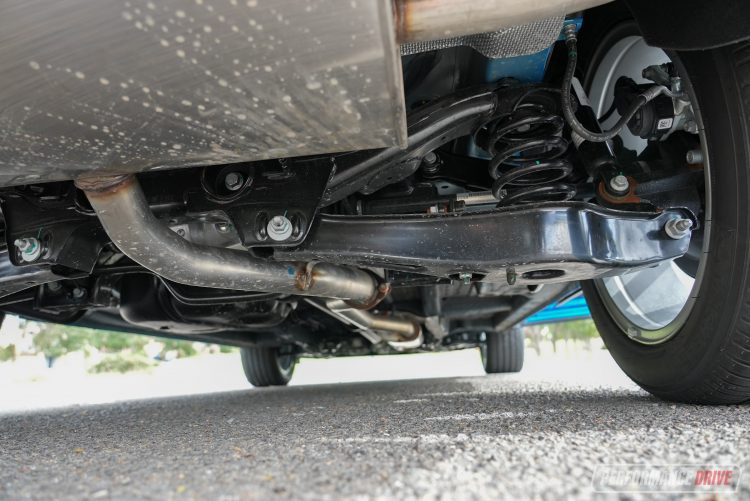
One area the HS does shine is ride quality. It’s soft and absorbent, and well suited to country roads with uneven surfaces. It’s also great along a dirt road, so long as you don’t travel at WRC-like speeds. It does mean the handling can feel springy and body control is not well managed if you expect sportiness, though. For this class, and the expectations of most consumers in this class, it’s probably going to pass through as an attraction rather than a repellant, having comfort prioritised over tautness.
MG’s Pilot safety technology suite is standard across the board, which is excellent to see. It includes autonomous emergency braking, adaptive cruise control, lane assist, traffic jam assist, and blind-spot assist. Rear cross-traffic alert is also included as standard, and the Essence includes a surround-view parking camera system for added peace of mind. All variants have been awarded a five-star ANCAP safety rating.
2021 MG HS Essence X AWD – THE VIDEO
2021 MG HS Essence X AWD – THE VERDICT
As we’ve said before, if you’re thinking of buying an MG HS because it’s from a brand that you know, you should be aware that these SUVs are built in China by SAIC, which was never involved in any way, shape or form with the classic British sports car manufacturer. The honest way to look at the MG HS is as an affordable and practical offering that’s filled with features, and backed by an extensive warranty.
The new X range features one of the most powerful petrol options in this class, although its fuel economy and emissions ratings are unsatisfactory for the level of performance and output it manages. Another big factor to consider is that the resale value is very likely to plummet in comparison to most of the established rivals.
In saying that, we’d watch out for MG in the future as it is a brand that’s expected to continue to build momentum and further improve its R&D to better meet international standards. For the moment though, and especially in comparison to the available alternatives in this space today, the old saying rings true, ‘you get what you pay for’.
[column width=”47%” padding=”6%”]PROS:
– Modern design
– Practical interior with lots of space
– Big touch-screen
– 2.0T engine is one of the most powerful in this class
– Soft and cushy ride comfort will appeal to some
– 7-year warranty
[/column] [column width=”47%” padding=”0″]CONS:
– Feels flimsy on the road; soft suspension lacks body control
– Media interface has clunky menus, long loading times
– Inconsistent powertrain; either provides too much or too little
– ‘Super Sport’ drive mode does what exactly?
– Poor fuel economy and high emissions[/column][end_columns]
As always, if you’re thinking about buying a new car don’t forget to click here to speak with our car buying specialists.
